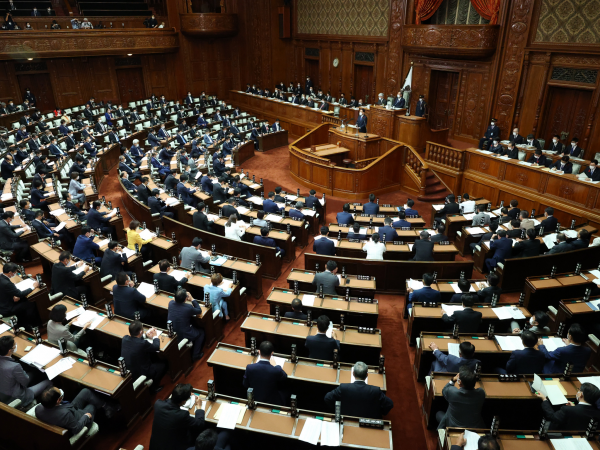The incident revealed the crony relationship between Japan’s governing Liberal Democratic Party (LDP) and the South Korean-based religious group. Despite securing another major victory in the upper house election, the Kishida administration has come under intense public scrutiny and is struggling to dissolve the party’s ties with the controversial church.
The assassination and the church scandal have overshadowed the significance of the July electoral results, which may have a substantial impact on Japanese politics in the coming years.
Compared to the 2019 election, the LDP and its coalition partner, Komeito, gained an additional five seats. That brought them to 146 out of 248 seats, exceeding a simple majority in the house. The LDP–Komeito ruling coalition, alongside the other two pro-constitutional reform parties — the Japan Innovation Party (JIP) and the Democratic Party for the People (DPP) — secured more than the two-thirds majority needed to propose constitutional revision in the upper house.
While Kishida’s approval rating dropped from 59 per cent in July 2022 to 40 per cent in September — reflecting rising COVID-19 cases and the Unification Church scandal — it is highly unlikely that the LDP will lose power anytime soon.
The largest opposition party — the Constitutional Democratic Party (CDP) — lost six seats in the election. The Japanese Communist Party (JCP) and the DPP both lost two seats. The CDP’s share of the popular vote dropped from 15.8 per cent in 2019 to 12.8 per cent in 2022, a loss of approximately 1 million votes. While the conservative JIP showed a remarkable improvement in the upper house, going from 15 seats to 21, its popular support is limited to the Kansai region.
One major reason for the opposition’s loss is their failure to form a united front. In the 2021 lower house election, the CDP, DPP and JCP pooled their votes by nominating a single candidate in each constituency. In this election, the opposition parties decided to field their own candidates.
Another reason is that votes from the Japanese Trade Union Confederation (Rengo), the nation’s largest trade union, are spread across the various left-leaning opposition parties. As the largest opposition party, the CDP has a dilemma. To challenge the LDP, it needs to form an alliance with other opposition parties, including the JCP. But the Rengo, a confederation that emphasises democratic labour movements, will not accept its alliance with the JCP.
Left-leaning opposition parties have also lost the support of voters under 40 years old. Young voters tend to support the LDP, whereas the older generation favours the liberal opposition parties. That is because the opposition parties still defend the status quo in national security and foreign policy, while the LDP challenges the status quo by pushing for constitutional revision. The persistent pacifism of left-leaning parties makes them seemingly unattractive to the younger generation.
With the electoral defeat of the opposition parties and no election scheduled for the next three years, a change in government is unlikely in the near future. But changes to the factional balance of power within the LDP may be on the horizon.
A change in a leading faction within the LDP could be as profound as a change in government. Abe’s Seiwakai has been the largest faction within the LDP since 2005, but in recent years there has been a power shift in favour of Kishida’s Kochikai faction.
Seiwakai has multiple leaders due to the absence of a strong successor after the sudden loss of Abe. Its popularity is also suffering from the Unification Church scandal, as many of its members have close connections with the church. Seiwakai might lose its influence over the LDP, perhaps enabling the Kishida cabinet to enhance its political strength through a more dominant Kochikai faction.
The LDP factions are sometimes called ‘parties within a party’. Though they were not formed on a shared ideology, they share some common policy stances. Abe’s Seiwakai is considered a centre-right, hawkish faction, whereas Kishida’s Kochikai is seen as a centre-left, dovish faction.
Despite their differences, the Kishida administration is taking a similar approach to foreign and security policy to Abe. But his ‘New Capitalism’ aims to achieve a fairer redistribution of wealth, diverging from the focus on economic growth under Abenomics.
Kishida has laid a firm foundation for success, but he could lose the LDP’s leadership race in 2024 if major factions such as Seiwakai and Taro Aso’s bloc withdraw their support. To safeguard his power, Kishida might dissolve the lower house within a year of holding elections. A weakened opposition and a scandal-ridden Seiwakai may provide Kishida with an opportunity to solidify his political foundation with another electoral victory.
Hironori Sasada is Professor of Japanese Politics in the Research Faculty of Media and Communication at Hokkaido University.
Tadashi Iwami is Lecturer in the Modern Japanese Studies Program at Hokkaido University.

